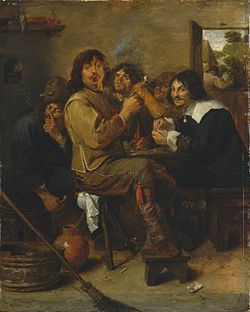
The Smokers is a painting by the Flemish painter Adriaen Brouwer, painted in about 1636, probably in Antwerp. It hangs in the Metropolitan Museum of Art, in New York. [1]
The oil-on-wood painting measures 46.40 by 36.80 centimetres (18.27 in × 14.49 in) and is signed by the artist. [2] [3]